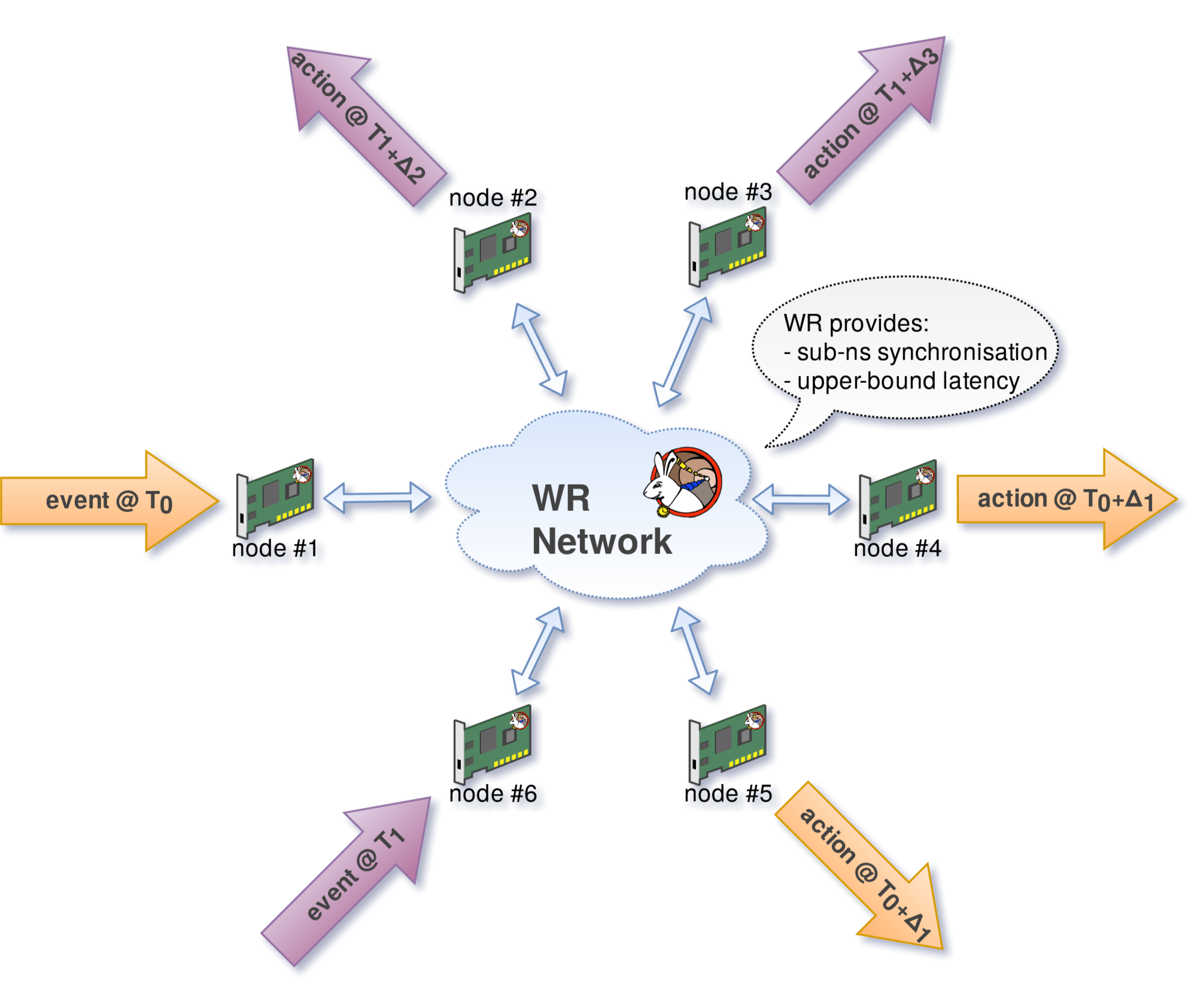WR Trigger Distribution allows for spacial distribution between the source of a trigger and the location at which an input signal is observed. At CERN, many analogue signals coming from accelerators are digitized to allow for their monitoring. Signals coming from different parts of the machines must be correlated and can be sources of triggers. Typically, the input analogue signals are sampled by digitizers with deep buffers. When a trigger condition is detected by one of the digitizers, it is propagated to the others to freeze their buffers. When using WR Trigger Distribution, the trigger coming from a digitizer is timestamped and this timestamp is broadcast to other locations over the WR Network. In all these locations, thanks to WR, a trigger is generated which is a precisely delayed copy of the source trigger. The acquisition in all these locations is stopped at the very same time with sub-ns accuracy. The buffers are re-winded to align and display what happened at the time of the original trigger.
CERN, the European Organization for Nuclear Research, operates a number of particle accelerators to perform fundamental research. To diagnose operation of accelerators, various analogue signals must be observed. This has traditionally been done by the OASIS system which acts as a distributed oscilloscope with more than one thousand channels. Triggers in this system are distributed through analogue coaxial cables which prevents it from being used in the LHC and sometimes makes the timing of the displayed signals incorrect (e.g. trigger signal displayed after the signal that is observed with the trigger).
When beam instabilities were observed in the LHC, the concept of distributed oscilloscope had to be adapted to LHC-scale distances.
Challenge
Correlate triggers and signals spacially distributed by kilometers
Solution
- Time-to-Digital (TDC) converter that allows sub-ns timestamping of input signals
- Fine Delay (FD) unit that allows trigger generation of output signals with sub-ns accuracy
- Synchronisation using WR Network
- Guaranteed upper-bound latency through the network
- Simple protocol to transmit the triggers.

The WRTD project generalizes the trigger distribution used in the LHC so that it can be used in the OASIS distributed oscilloscope system. OASIS monitors more than 1000 analogue signals at CERN. In this system, WRTD gradually replaces analogue distribution of triggers and allows the expansion of the system to larger distances, including LHC.
Figures from:
- “TRIGGER AND RF DISTRIBUTION USING WHITE RABBIT“, Tomasz Włostowski et al.
- RENOVATION OF THE TRIGGER DISTRIBUTION IN CERN’S OPEN ANALOGUE SIGNAL INFORMATION SYSTEM USING WHITE RABBIT, D. Lampridis et al


